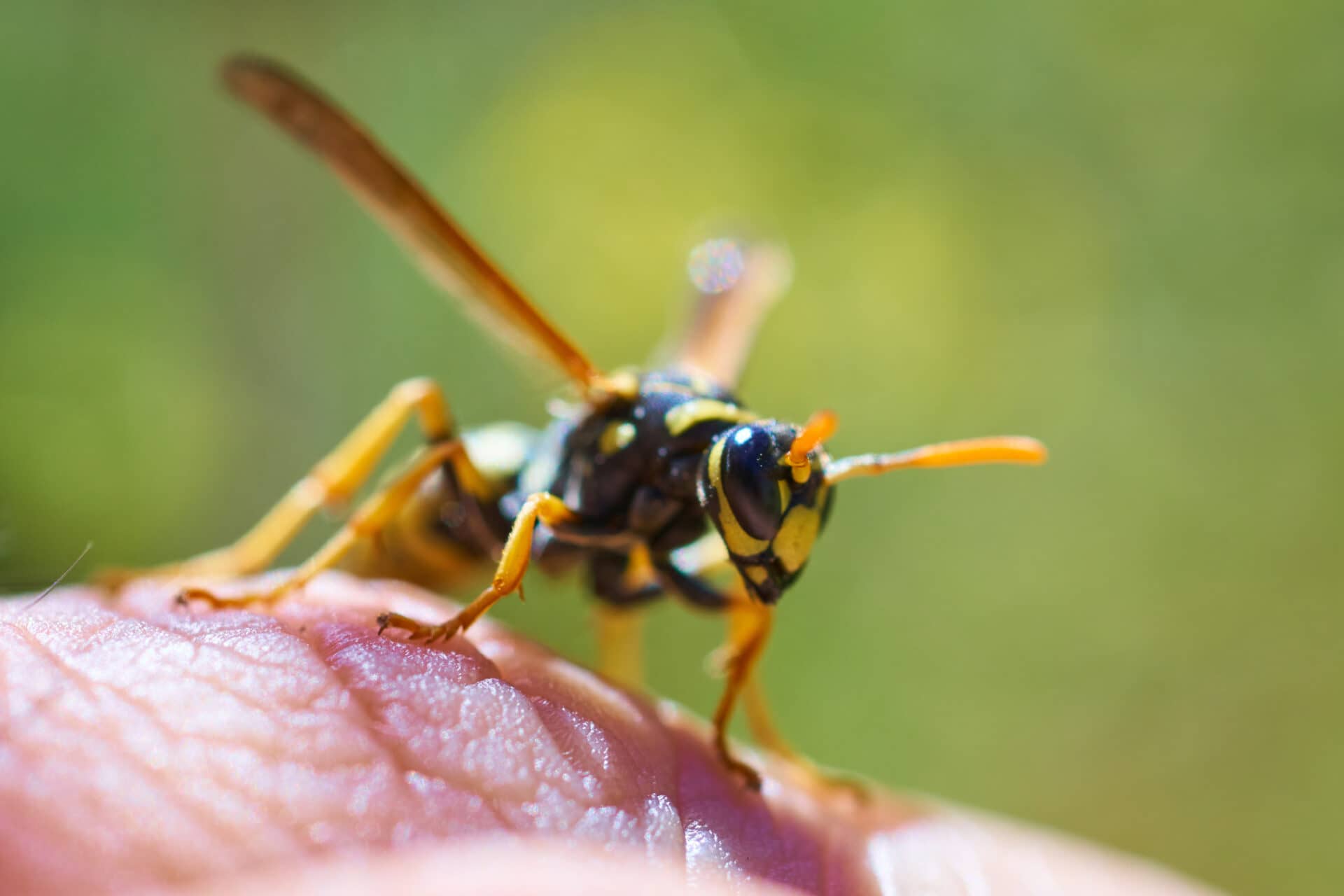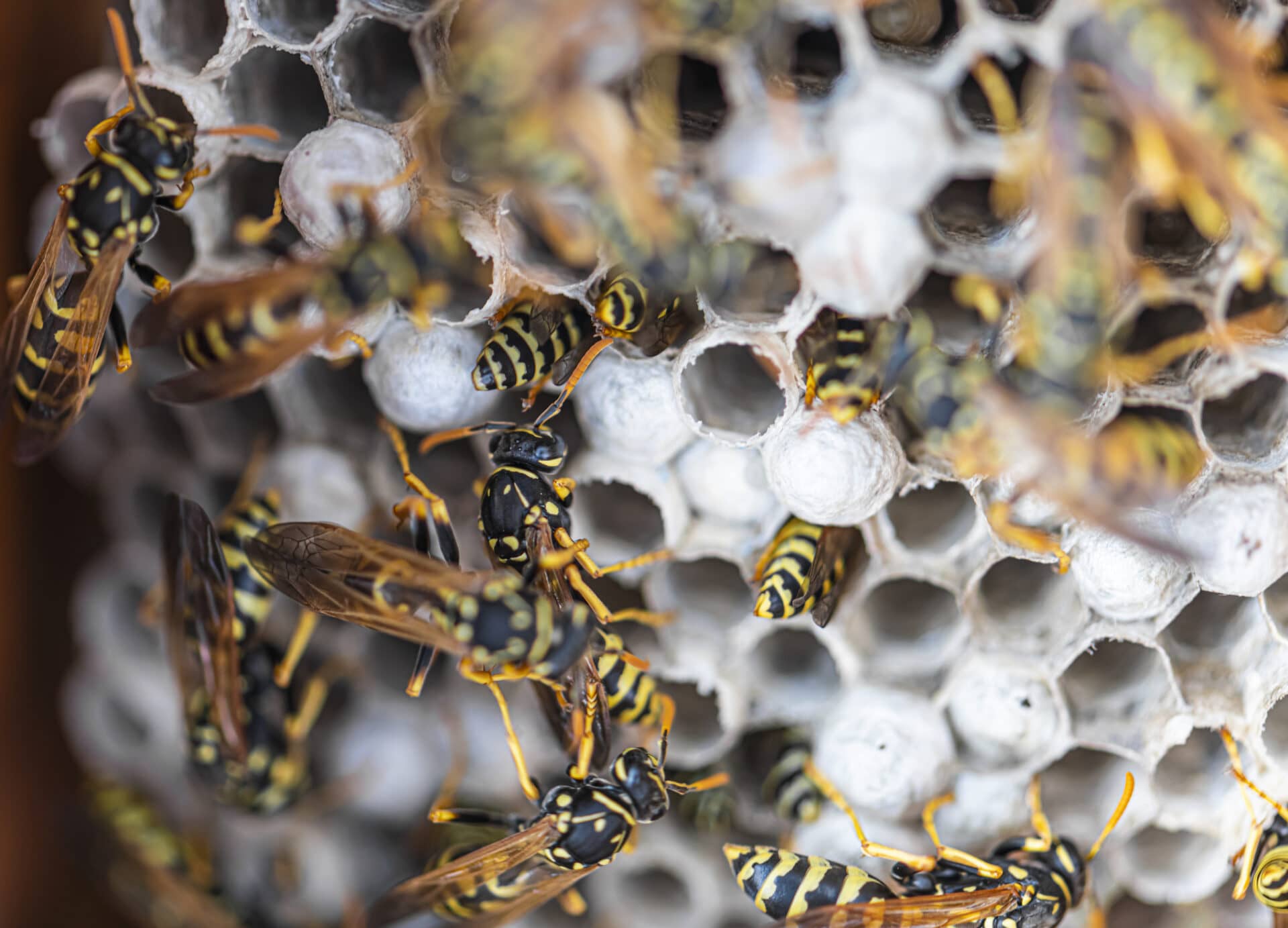Wasps come in a few shapes and sizes, but all types can be nasty if not dealt with quickly. The two most common types of wasps in Australia are the European Wasp and the Papernest Wasp. Both are commonly found in urban areas around the country, as well as in bushland, and various types of forests. The European Wasp is more common in cooler climates, such as the southern states.
These two species are quite different in a number of ways. The European Wasp is smaller, at around 12-16mm, while the Papernest Wasp can range from 13-25mm. The former is coloured yellow and black, while the latter is brown to black. There are three variants of the Papernest or Paper Wasp - European, Asian and Australian. All of these wasps can deliver multiple nasty stings and will aggressively defend their nests. If stung, it’s important to apply an ice pack to the area and observe the area for allergic reactions.
At Oracle Services, we offer safe, comprehensive wasp removal services. It’s best to let the experts deal with wasps so that you can avoid painful stings.
Exploring the Distinctive Characteristics and Habits


Consult a pest control expert for wasp infestations to ensure a more effective and safer removal process. Wasps can be dangerous, particularly large nests.
We utilise safe pesticide sprays that eliminate wasps and destroy nests quickly. We always conduct these treatments in an environmentally-friendly manner, keeping you and your family safe at all times.
Baiting is ideal when the wasps nest cannot be located, which is quite common. While we will do everything possible to locate the source, baiting can destroy the colony from afar.
It’s important to regularly inspect the exterior of your home or business, checking for any signs of wasps or wasp nests. The faster you treat the issue, the easier it will be.
Cut back branches and bushes that are close to or overhanging your home, to ensure that wasp nests do not build nests close by.
Keep rubbish bins closed tightly and do not leave food unattended outside, as this is a common way to attract European Wasps.
We’re always here to offer an assessment and advice on how to prevent an infestation of wasps. Our pest control experts are just a call away.
At Oracle Services, we know that preventing wasps is always a better option than removing a nest down the track. However, wasps nests can be tough to spot at first, especially when hidden away in wall or ceiling cavities. This is exactly why expert pest inspections are a must. Our team of technicians apply all of their skills and knowledge to discover and eliminate any wasp nests at home or in a commercial setting, before they become a big problem.

The first step is a thorough inspection of your home or business. We’ll take the time to identify the type of wasps and locate the nest if possible.
Once we have completed the inspection and identified the source of the wasps, we’ll consult with you regarding an effective treatment.
We’ll plan the most effective strategy to eliminate wasps and destroy the nest quickly and safely, aiming to ensure they don’t reappear again.
Our expert technicians will execute our pest control plan to maximum effect, eliminating wasps with the use of effective treatments and sturdy safety gear.
Once we’ve completed the pest control service, we will provide you with a plan to help prevent a re-infestation of wasps in the future, giving you peace of mind.
These are some of the most common questions we get asked about pest control for wasps.